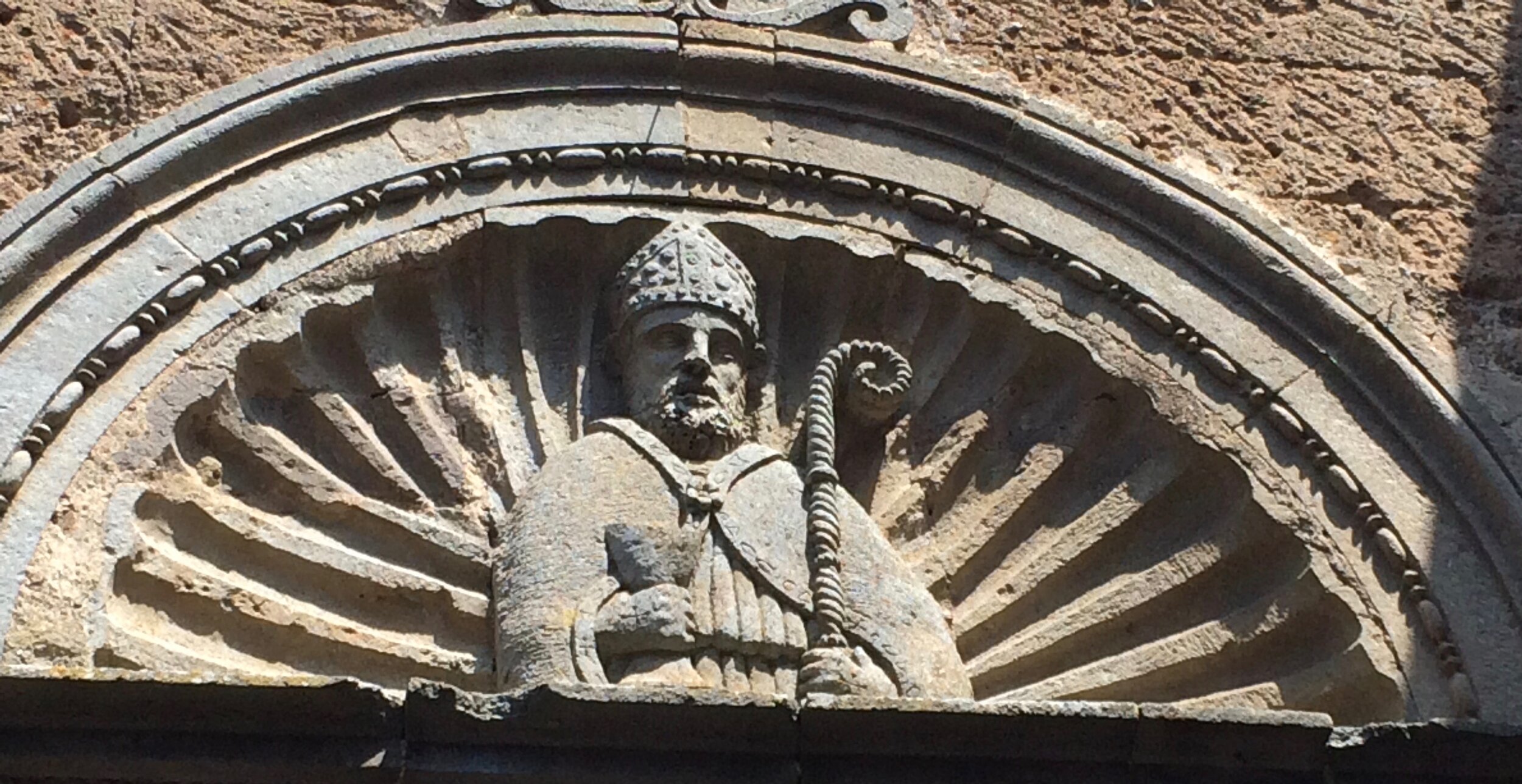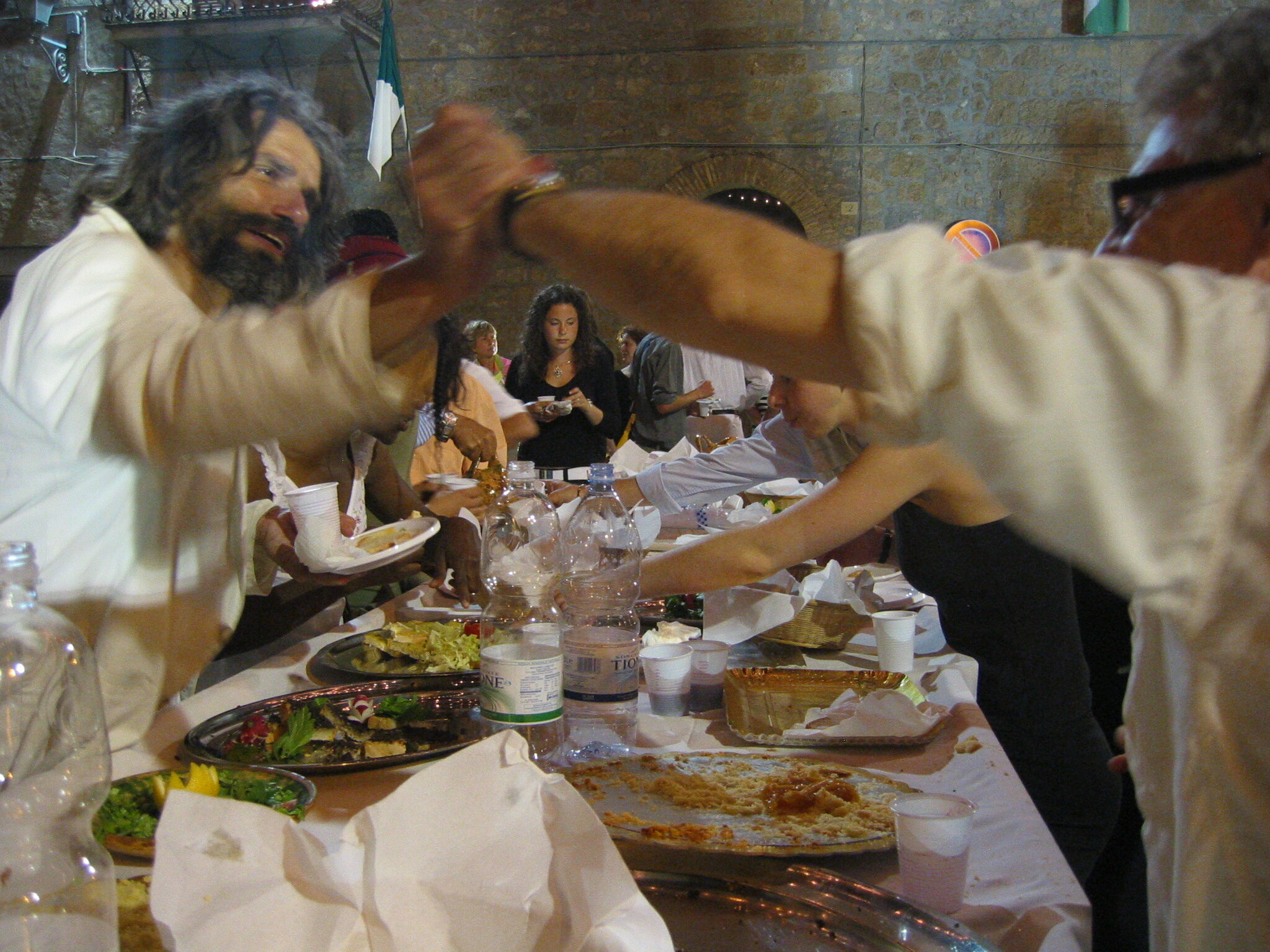Santo Giovenale, first bishop of Umbria
The church of San Giovenale, the most beloved church for the people of Orvieto, was dedicated in 1004 and has served as the parish church for the neighborhood since its founding.
Carving of Santo Giovenale above the church door
The church is dedicated to Saint Juvenal—San Giovenale in Italian—the fourth-century missionary bishop (exact dates of his life are unclear) who came from north Africa (very likely from present-day Tunisia) to bring the gospel of Christ to the southern part of Umbria. Churches in his honor can be found in Narni and Terni as well as in Orvieto.
During the twenty years of Gordon College’s presence in Orvieto, several hundred students and teachers have been welcomed by the parishioners and its beloved priest Don Enrico. For many students, singing in the San Giovenale choir has provided an opportunity to contribute to the life of the church in Orvieto. Choir director Edoardo has turned to the Gordon students on several occasions to provide the special music for Easter.
Beginning in 2004 with New York theater director Karin Coonrod’s series of linked episodes from the medieval play cycles, the parish of San Giovenale has provided the point of reference and place of reliable support for the now-substantive body of sacre rappresentazioni (religious theater) mounted by Studio-director John Skillen and KaminaTeatro director Andrea Brugnera.
With permission from the bishop, Don Enrico allowed Coonrod to enact the episode of the Sacrifice of Isaac right on the altar itself, rendering vivid the traditional understanding of the Old Testament event as a foreshadowing of Another Father sacrificing His only begotten Son on another Wood, adding further resonance to the altar as the place of the Eucharistic sacrifice of the lamb of God.
Coonrod’s concluding episode of the Supper at Emmaus—where the resurrected Christ is recognized by the two sorrowing disciples in His breaking of the bread—was staged around a long table set up in the piazza adjacent to the church. When Jesus disappears, the ladies of the parish bring out platters of food shared by spectators and actors together under a canopy of lights. The supper at Emmaus is happening now. The fourth wall between audience and performers dissolves.
More recently we performed a new version of a medieval play about the Tree of Life—referring both to the Tree in the Garden of Eden and the Tree of the Cross—inside the church below a well-worn fresco in the church depicting the treatise of the same name by St. Bonaventure. [Read Mara Nerbano’s account here.] A play about the reluctant prophet Balaam delivering his Messianic prophecies to King Balaak was staged in the garden flanking the church of San Giovenale. With Balaam’s talking donkey in a central role, and a Balaak whose ranting took the form of speed-talking raps, we recovered the mix of comedy and seriousness that often marked medieval scriptural drama (aptly described by scholar V. A. Kolve as “religious laughter”). An earlier play about Christ’s Harrowing of Hell was performed in and around the open cave in the cliff-side garden below the church.
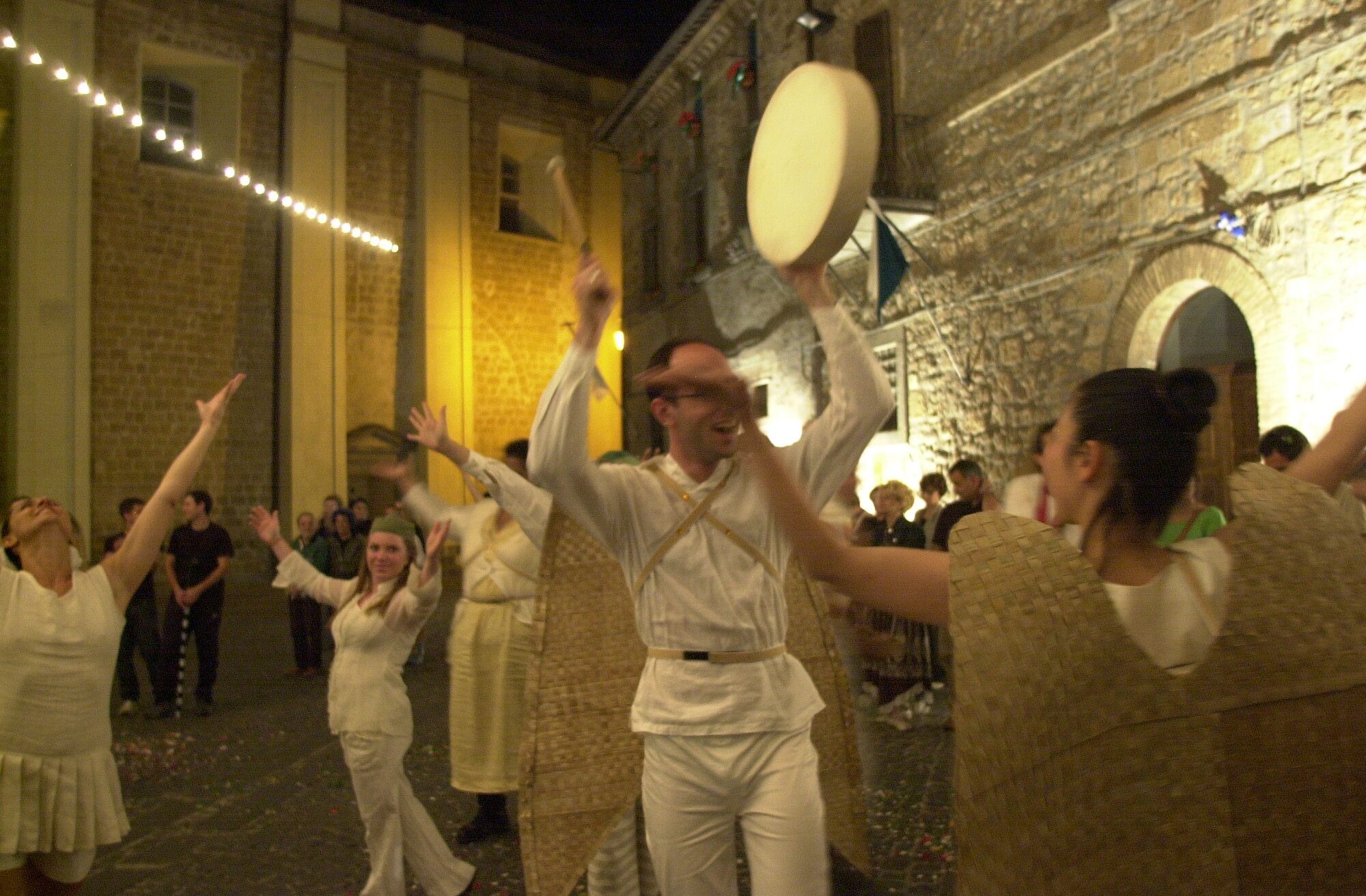
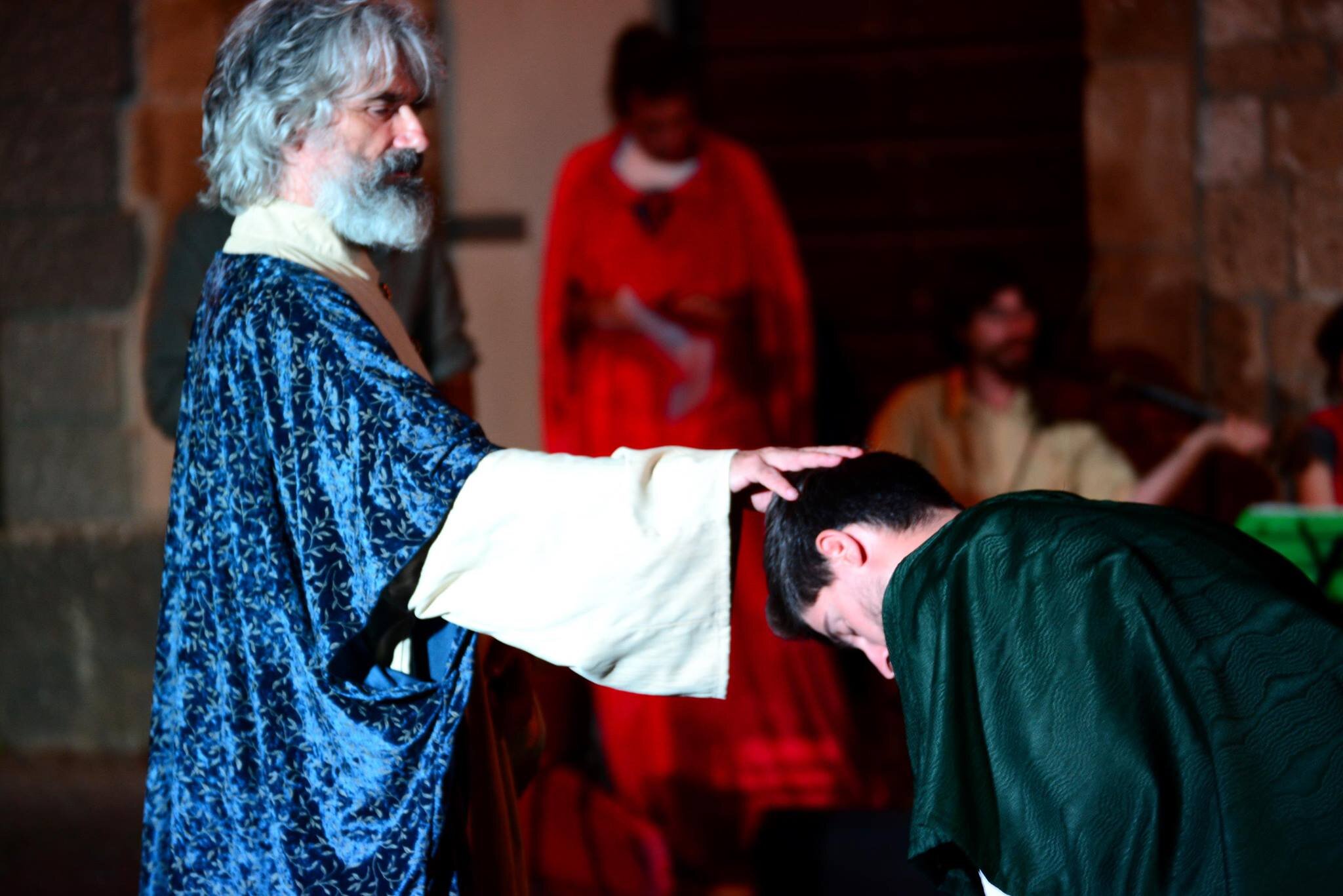
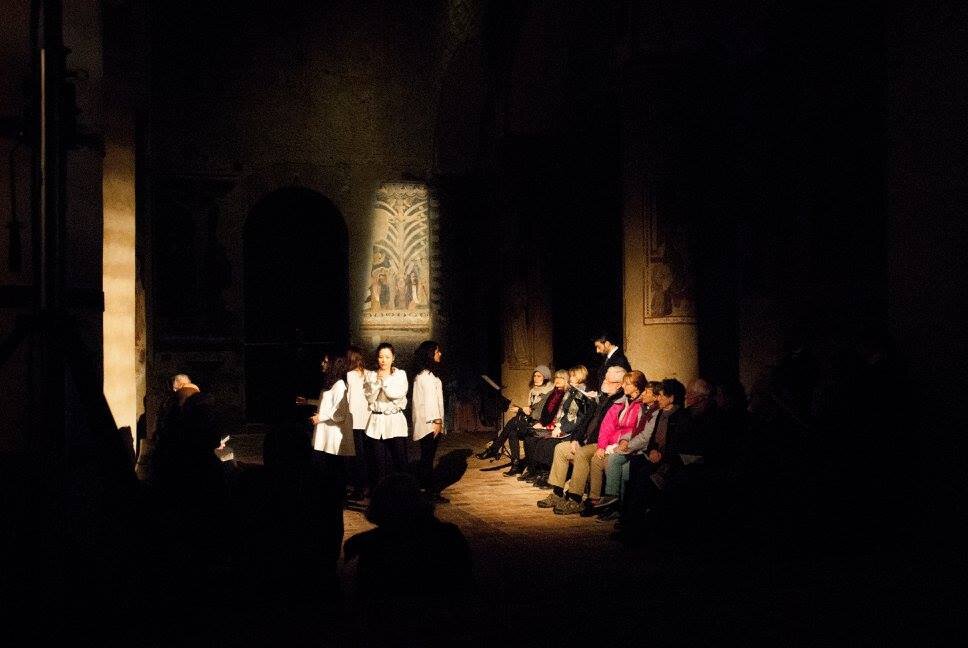
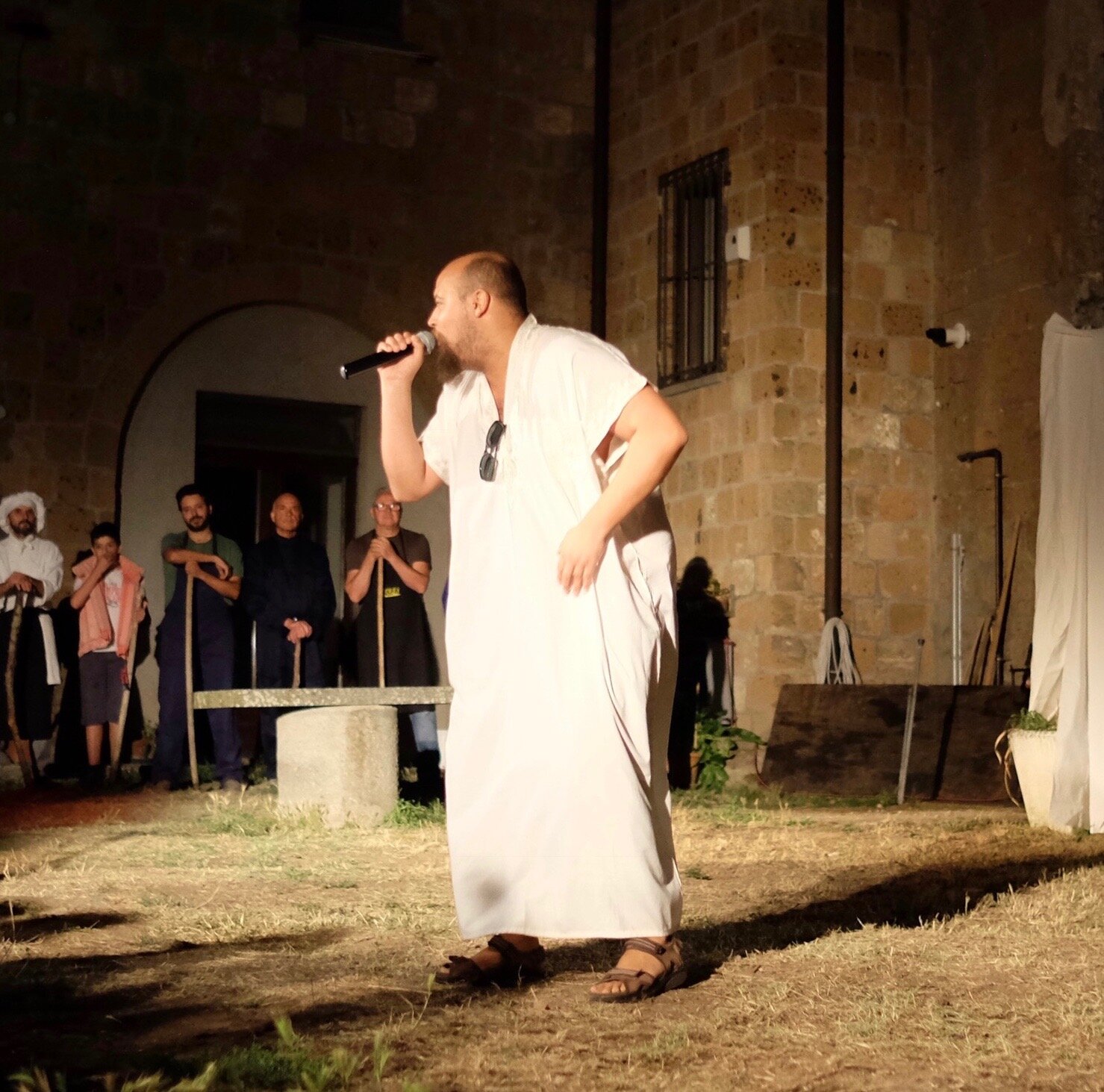
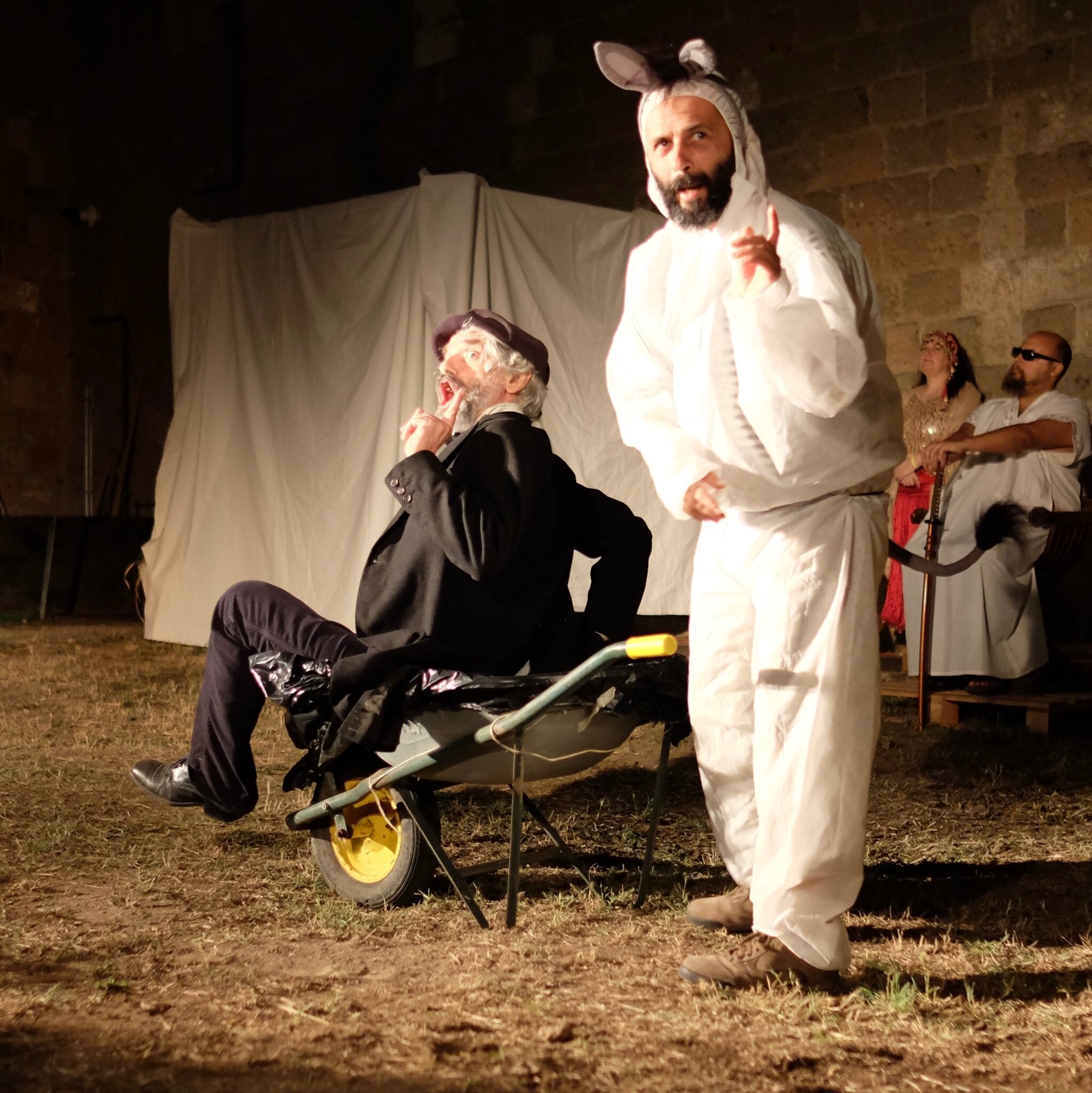
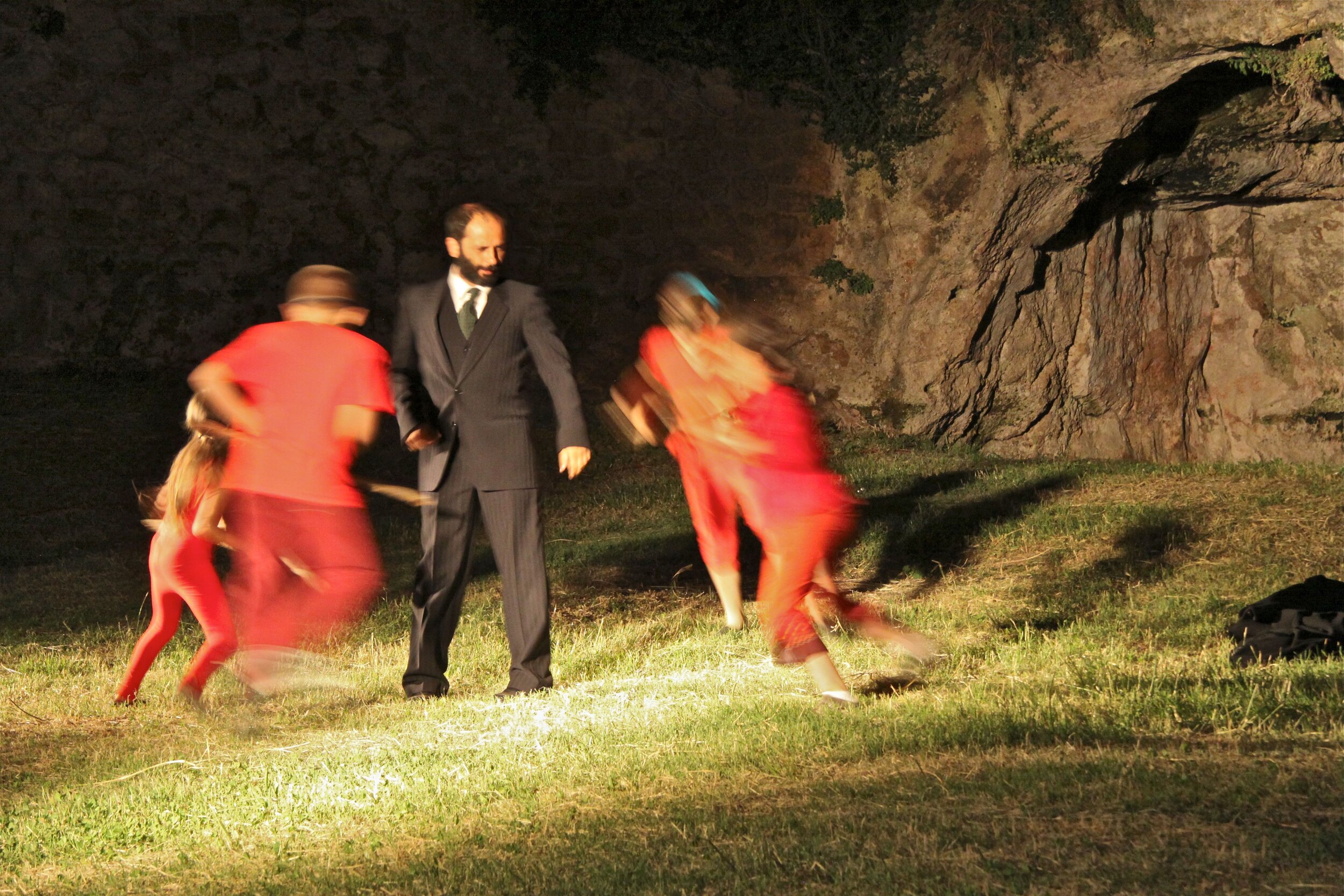
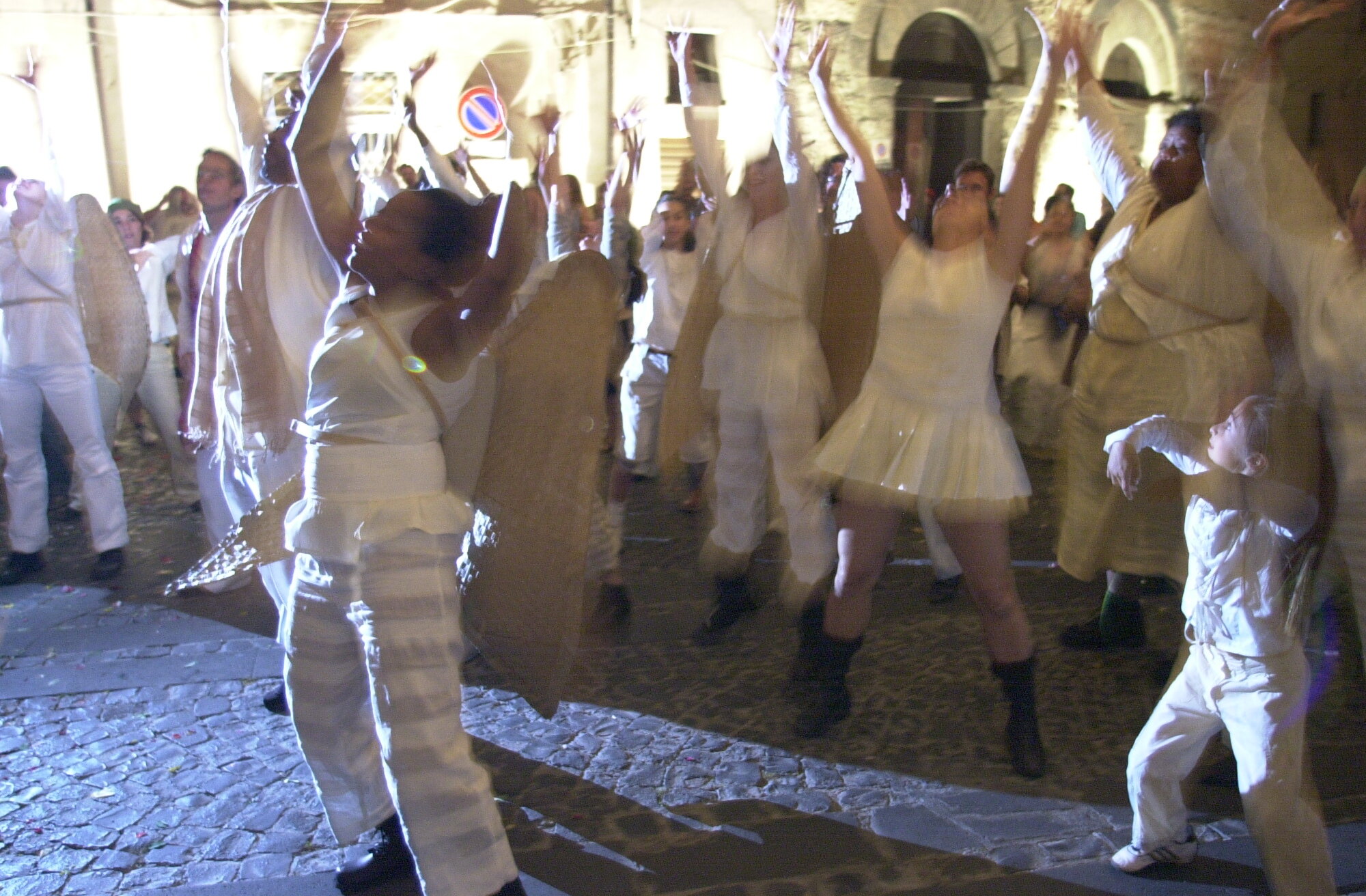
Lo and behold, in gravitating towards the church of San Giovenale we were following a compass into a largely-forgotten history of religious drama in Orvieto. We discovered that, during the medieval period, San Giovenale served as home base for a religious social club (a confraternity) that put on sacred drama according to the seasons of the Church Year. In the year 1405 a certain Tramo di Lonardo wrote down as best as he could all the plays that were being performed every year around the city. The manuscript, which is incomplete, contains over thirty plays, some with clear reference to the church of San Giovenale.
The last play in the collection dramatizes Santo Giovenale being made bishop of Narni—although it is thin on what we would call dramatic action. It’s more of a ceremonial or liturgical reenactment. Having confirmed the enthusiasm of the parish’s lay committee for the project, Andrea Brugnera and I put on that play in July 2018 just outside the doors of the church in the little piazza overlooking the landscape of Umbria below the cliff. Andrea expanded the brief script into an entire life of Juvenal, drawing on other saints’ lives and historical-geographical-literatry texts to create uniformity of language and style—adding music and dance into the mix.
One of the actors in Brugnera’s team mentioned that in her work as a tutor she had come to know the children of an immigrant Tunisian family, and wondered if we would like to involve them in the scenes of young Juvenal in his homeland. Their parents gave their permission; the kids were thrilled; and asked if they could wear their special heritage clothing.
After the play, several of the audience members came up to Andrea and me, saying in various ways how they realized for the first time that the refugees and immigrants from north Africa (who are arriving in ever greater numbers even to little towns like Orvieto, and not always welcomed) came from the same land as the beloved saint who had brought us our faith, and now we have the opportunity to reciprocate by welcoming San Giovenale’s compatriots. One lady said, “I’ll never think of the immigrants and refugees the same. Grazie!” Maybe a little thing, but this was a big deal for me: old medieval sacred theater having a fresh impact now.
To show the present timeliness of old stuff from pre-modern Christian tradition: that’s the spirit of the work of the Studio for Art, Faith & History and KaminaTeatro. The same intention informs Andrea’s and my projects about modern saints and martyrs, such as our recent plays about Russian Orthodox priest and theologian and scientist Pavel Florensky martyred in Stalinist Russia, and the courageous Carmelite nuns during the Reign of Terror in the French Revolution who accepted the guillotine rather than repudiating their faith and disbanding their community (January 2020).

